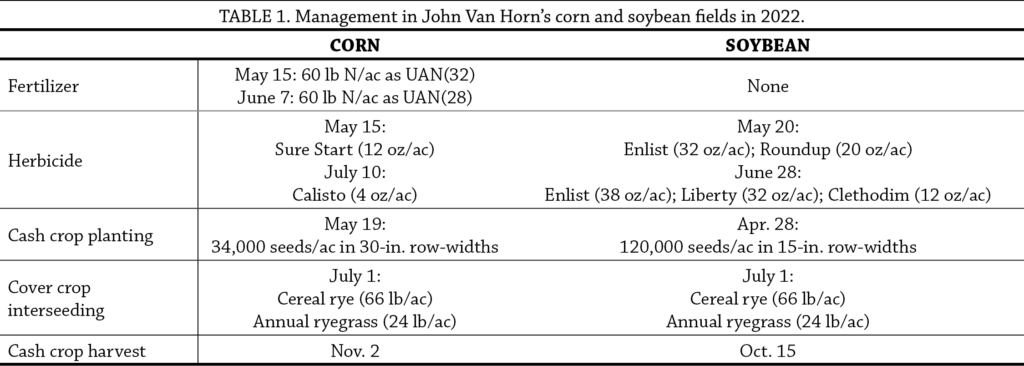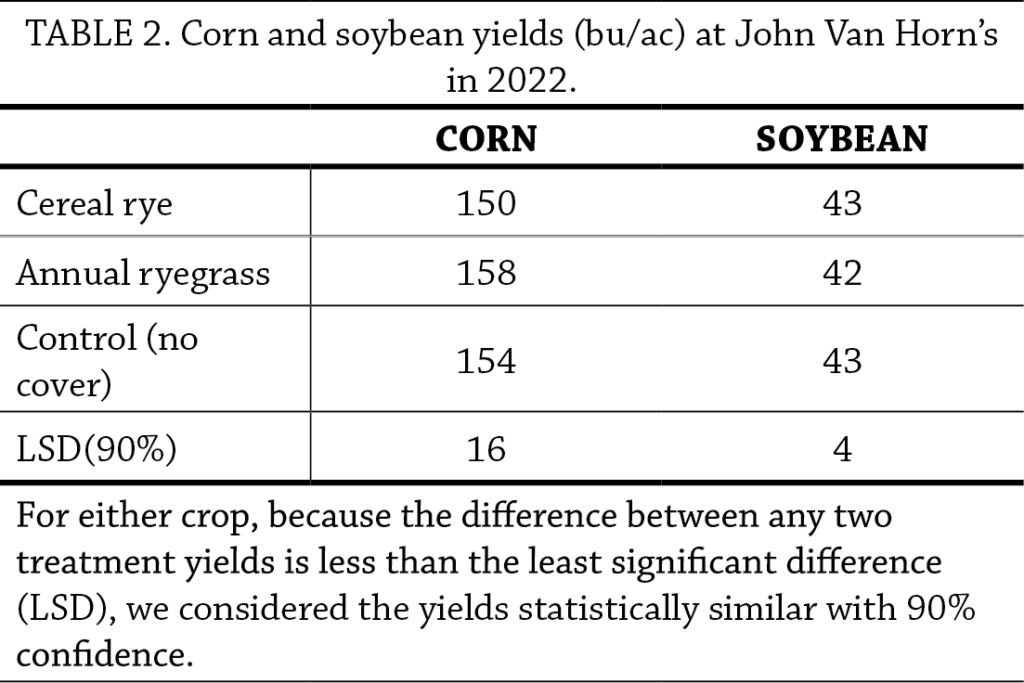Interseeding Cover Crops to Corn and Soybeans
This research was funded by Walton Family Foundation
In a Nutshell:
- John Van Horn built his own cover crop interseeder and wanted to learn if he could successfully establish cover crops seeded to standing corn and soybeans in early summer. A primary motive was establishing forage for cattle to graze in the fall.
- Van Horn also wanted to determine if interseeding cover crops had any effect on the yields of corn or soybeans.
Key Findings:
- Drought conditions severely hampered growth by the interseeded cover crops, making effects on corn and soybean yields difficult to surmise.
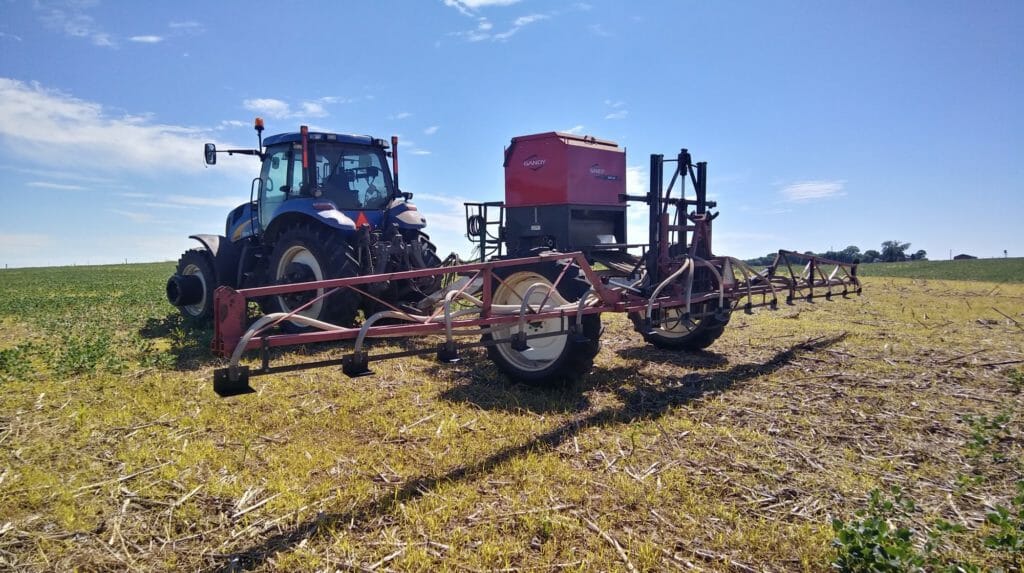
John Van Horn interseeded cereal rye and annual ryegrass cover crops using a custom-built seeder on July 1, 2022.
Methods
Design
Van Horn planted corn and soybeans in separate fields in spring 2022 and then evaluated two different cover crop species for interseeding: cereal rye (Secale cereale) and annual ryegrass (Lolium multiflorum). He established three treatments in each field:
- Cereal rye – Cereal rye interseeded to standing crop.
- Annual ryegrass – Annual ryegrass interseeded to standing crop.
- Control – no cover crop interseeding.
Van Horn implemented three replications of the three treatments (Figure A1) in strips measuring 40 ft wide by 2,450 ft long in the corn field and 37.5 ft wide x 1,905 ft long in the soybean field. Field management for both fields is presented in Table 1. For interseeding the cereal rye and annual ryegrass cover crops, Van Horn used what he described as low-level broadcast seeding to standing cash crops.
Measurements
Van Horn made visual observations of the interseeded cover crops throughout the summer and fall. He harvested corn and soybeans from each individual strip in fall 2022. Corn yields were corrected to 15.5% moisture and soybean yields were corrected to 13% moisture.
Data analysis
To evaluate the effect of the interseeding treatments on corn and soybeans, we calculated Tukey’s least significant difference (LSD) at the 90% confidence level. If the difference between any of the two treatments was greater than the LSD, we would expect such a difference to occur 9 times out of 10 under the same conditions – we referred to this as a statistically significant effect. On the other hand, if the resulting difference between any two treatments was less than the LSD, we considered the results to be statistically similar. We could make these statistical calculations because both Van Horn’s experimental designs involved replication of the treatments in both the corn and soybean fields (Figure A1).
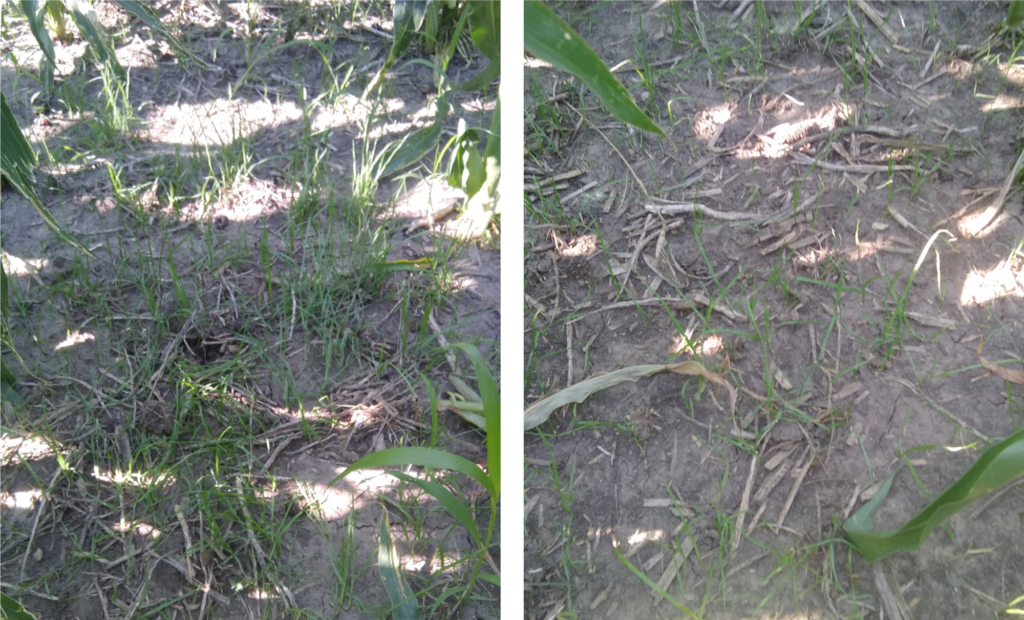
At left, annual rye grass that was interseeded to corn. At right, cereal rye that was interseeded to corn. Photo taken on July 21, 2022; cover crops were interseeded to corn on July 1, 2022.
Results and Discussion
Cover crop survival
Following interseeding on July 1, Van Horn made routine observations of cover crop germination and survival. Due to severe drought conditions at his farm in west-central Iowa (Figure A1), Van Horn observed very little (if any) cover crop growth. On Aug. 2, (one month after interseeding) Van Horn noted some growth of annual ryegrass in both the corn and soybean fields but saw far less growth in the cereal rye strips. “Upon harvest, in the corn I found some good patches of annual rye, but most of the field had little or none,” Van Horn said. “In the soybeans, there was very little growth of any cereal rye.”
Crop yields
Corn and soybean yields were not affected by the interseeding treatments (Table 2). This came as no surprise to Van Horn because cover crop growth was nearly nonexistent due to the limited moisture conditions (Figure A1)..
Conclusions and Next Steps
“We suffered through a moderate to severe drought for most of the growing season, with minimal
rainfall between when I interseeded the cover crops and harvested the corn and soybeans,” Van Horn said. “I was fortunate to have the yields I obtained.” Based on his observations, Van Horn thinks that annual ryegrass has a chance to succeed when interseeded to corn and provided adequate moisture. He is going to try again in 2023.
Appendix – Trial Design and Weather Conditions

Figure A1. Van Horn’s experimental design consisted of three replications of the three treatments in both a corn field and a soybean field. This design allowed for statistical analysis of the data.
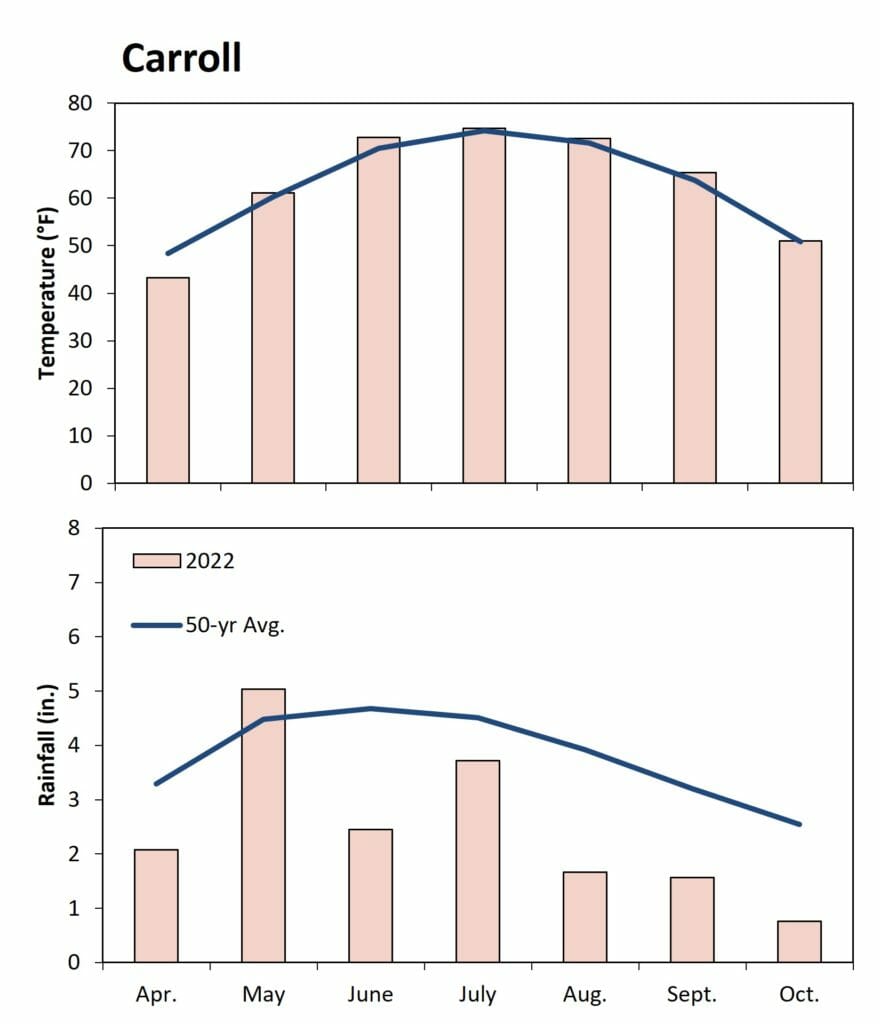
Figure A2. Mean monthly temperature and rainfall during the trial period and the long-term averages at Carroll, the nearest weather stations to Van Horn’s farm.[1]
References
- Iowa Environmental Mesonet. 2022. Climodat Reports. Iowa State University. http://mesonet.agron.iastate.edu/climodat/ (accessed December 2022).

